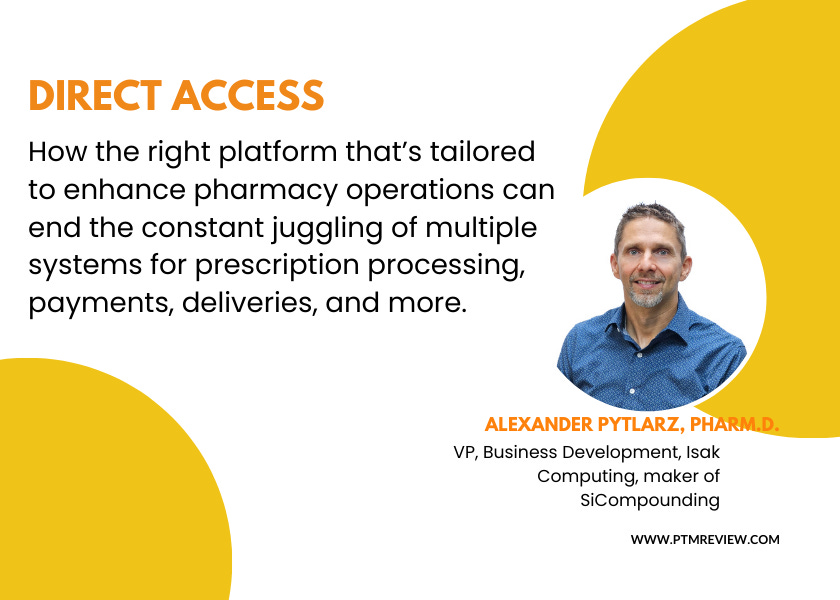Profitability and Compliance: SiCompounding’s All-in-One Solution
Direct Access | Alexander Pytlarz, Pharm.D., VP of business development at Isak Computing, sheds light on the company‘s SiCompounding platform and its features tailored to enhance pharmacy operations.
In this interview with PTMR’s Maggie Lockwood, Alexander Pytlarz, Pharm.D., VP of business development at Isak Computing, sheds light on the company‘s SiCompounding platform and its features tailored to enhance pharmacy operations. Drawing on his operational insights from the long-term care pharmacy sector, coupled with his 16-year immersion in compounding pharmacy, Pytlarz recognized SiCompounding’s potential to empower pharmacists by integrating their business acumen with their clinical expertise.
PTMR: Alexander, we’re eager to learn more about SiCompounding. Could you elaborate on its development and the built-in operational efficiencies?
Alexander Pytlarz: SiCompounding aims to revolutionize the prescription-filling process by embedding automations that minimize manual steps. For pharmacy owners, our software’s scalability is a key advantage. Features like AI-driven tools, presc…
Keep reading with a 7-day free trial
Subscribe to Pharmacy Technology & Management Review to keep reading this post and get 7 days of free access to the full post archives.


